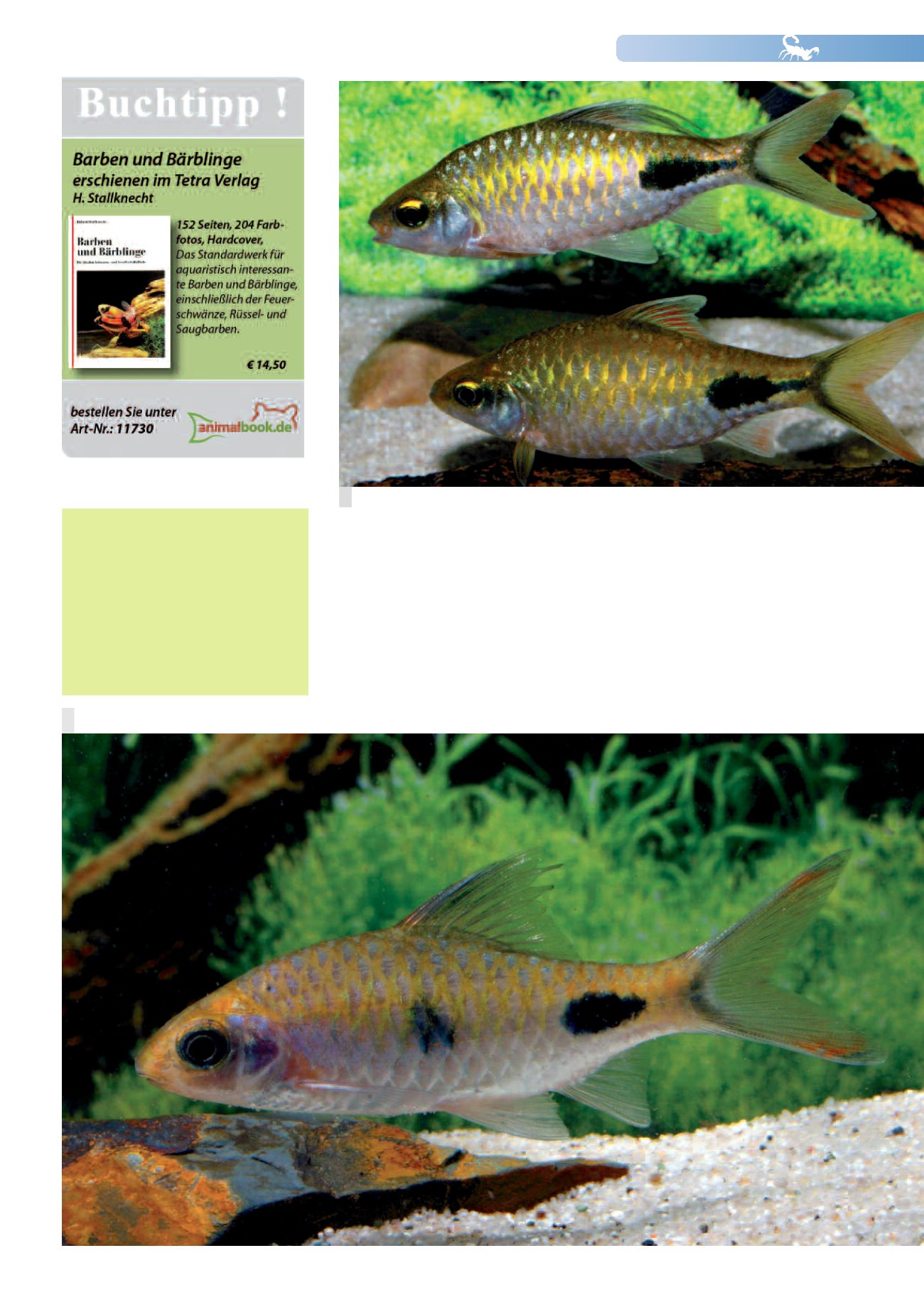
NEWS106
9
Pairof
Dawkinsia rohani
,a speciesonly recently scientificallydescribed.
Thisnewly imported
Dawkinsia
speciesmost closely resemblesD.assimilis inbody form,but sometimeshasa lateral spot like
D.exclamatio
.
Literatur:
Knight,J.D.M.,Devi,K.R.&V.Atkore (2011):Systematic
statusof Systomus rubrotinctus Jerdon (Teleostei:Cy-
prinidae)withnotesonthePuntiusaruliusgroupoffis-
hes.Journalof threatenedtaxa3 (4):1686 -1693
Pethiyagoda,R.,Meegaskumbura,M.&K.Maduwage
(2012):Asynopsisof theSouthAsian fishes referred to
Puntius (Pisces:Cyprinidae). Ichthyological Exploration
ofFreshwaters23 (1):69-95
Schäfer,F.(2009):Indianerarben.AquaristikFachmagazin
Nr.205 (Februar/März):28-34
them. It would be very welcome if those
lucky enough to get hold of wild-caught
specimens of such specieswere to report
their observations and breeding experi-
ences in theaquaticpress.
Themaintenance and breeding of Indian
barbspresentsvery fewdifficulties,as they
are robust, adaptable, andpeaceful fishes,
whichnevertheless require comparatively
spacious aquaria.Water parameters are of
secondary importance. Spawning usually
takesplace in themorningafterasplendid
courtship display. The major problem in
breeding is in removing thespawn tosafety
before theadult fishesgreedilydevour it.


